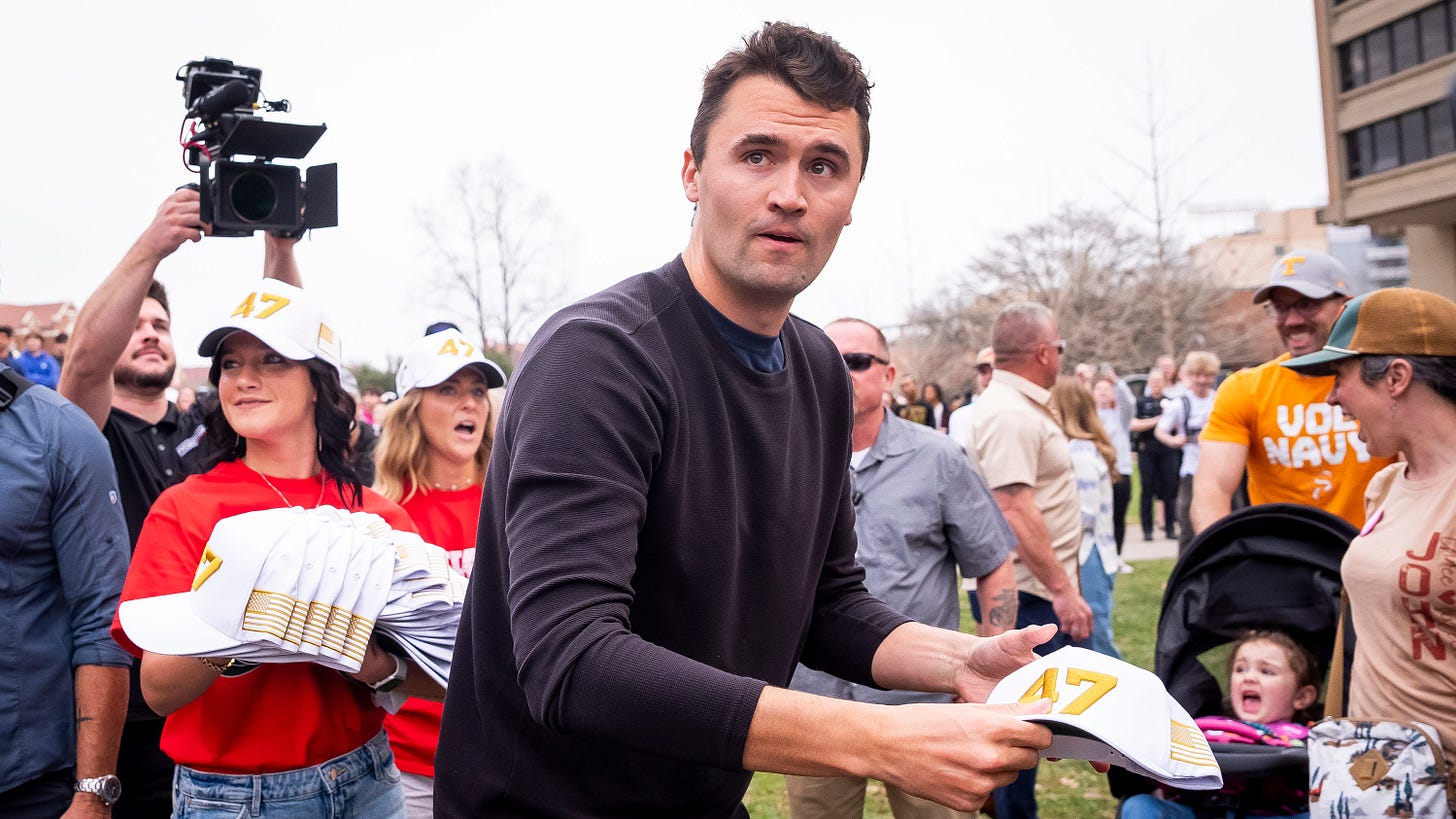Is the Age of Gerontocracy Finally Over?
How Young Leaders Are Transforming the Idea of Leadership and Shaping the Future of American Politics

For decades, American politics has been dominated by older leaders. From the presidency, Congress, and even state legislatures, the halls of power have often reflected a generational gap that leaves younger voices unheard. But a new wave of leadership is emerging, signaling that the age of gerontocracy may finally be giving way to a more representative, youthful political landscape.
Young people have long been at the forefront of political activism, pushing for climate action, gun reform, reproductive rights, and economic justice. Yet, when it comes to actual representation in government, the numbers have remained starkly disproportionate. The average age of Congress hovers just under 60, while the country’s median age is nearly 40, and due to get older as people continue to live longer. For years, experience was equated with age, but a growing number of young leaders are proving that lived experience and passion can be just as powerful.
We tend to think of young people in politics in the same vein as the enigmatic Alexandria Ocasio-Cortez, who at 35 years old is still one of the most influential and powerful voices on the left-wing of American politics since her election in 2018. But what we tend to see less of is people in the party structures, the general assemblies, the local municipal governments, etc. Long have all of these areas been dominated by the Silent and Boomer generations, and only recently has Gen X started to gain a real foothold of power.
There are many reasons why Americans everywhere are fed up with the age-advanced having a stranglehold on the reins of power in this nation. We have seen time and again the inability of our elder elected leaders grasping current-day concerns of the younger generations, while at the same time complaining about younger generations (but, that’s a tale as old as time). As more Congressmembers show their age, calls for age limits, term limits, and senility tests abound. Many of my peers will express a sentiment akin to, “they’re too entrenched, and therefore we need systemic change to elect more young people.”
But I — and others I will highlight below — hold a different view: why wait?
Challenging the Status Quo
You don’t have to look much further than the heads of the Democratic Party to see younger faces emerging. At just 25 years old, Anderson Clayton made headlines as the youngest state party chair in the nation when she assumed leadership of the North Carolina Democratic Party in 2022. Her victory wasn’t just symbolic; it marked a conscious rejection of traditional political hierarchies. Clayton ran on a platform that prioritized rural outreach, recognizing that the party’s neglect of these communities had left many voters disillusioned, and combined it with a personality of restless energy.
Instead of relying on top-down strategies, Clayton took to the ground, launching a “30 campuses in 30 days” tour to engage young voters. Her leadership serves as a case study in how younger perspectives can reinvigorate state parties and address voter apathy. While Democrats faced tough challenges in 2024, Clayton's grassroots approach began laying the foundation for long-term gains. She recently won re-election to her position in a landslide, and her infectious energy seems to be pumping the blood of tar heel (that’s an old term for North Carolinians) Democrats to push them past the disappointment of losing their increasingly purple state to Donald Trump by 4 points. Her next challenge will be rallying voters for a contentious Senate election in 2026.
Another example: in February, 24-year-old David Hogg shocked many in the establishment with his rise to leadership as the newly elected Vice-Chair of the Democratic Party. After surviving the Parkland school shooting in 2018, Hogg became one of the most prominent advocates for gun reform. His work with March for Our Lives galvanized a generation of young voters and forced lawmakers to confront the gun violence epidemic.
Though some in the Democratic establishment felt he was too bullish on gun legislation and too focused on youth advocacy, his presence in leadership is a testament to the power of activism translating into institutional change, and reflects a growing recognition that those directly affected by policy decisions must have a seat at the table. Hogg's focus on increasing youth voter turnout and pushing for bold policy solutions stands in sharp contrast to the incrementalism often championed by older politicians.
And these two are merely the most prominent elected positions I can exhibit. In fact, recently in Texas, 35-year-old Kendall Scudder was elected as Chair of the Texas Democratic Party. There are also many influential young Democrats elected at the State and Federal level that under-40 progressives who want to run for office should model themselves after: Maxwell Frost (28) from Florida, James Talarico (35) from Texas, or Nabeela Syed (25) from Illinois, many of whom have been supported by organizations like Run For Something.
There’s no shortage of young progressives and liberals, but for every action there is an equal yet opposite reaction. Republican counterparts are also asserting their influence, and an increasing population of young conservatives are making waves in American politics.
Young Conservatives on the Rise
Not to be outdone, young leaders are also gaining traction on the right. For every young Democrat running and building prominence, there’s a young Republican doing the same — if not more. Figures like Madison Cawthorn and Bo Hines (both currently 29) in North Carolina both ran for Congress as soon as they were eligible. John Wahl of Alabama was elected chair of the Alabama Republican Party at 35 years old in 2021 and now serves as the Vice Chair of the RNC. These and many other young conservatives exemplify a new wave of leadership that has been buoyed by the Trump and MAGA base as they attempt to woo more young voters (especially men) to their side. Many of these leaders focus on championing small government policies, economic growth, and issues that resonate with younger conservative voters, such as parental rights, culture change, and Second Amendment advocacy.
Organizations like Turning Point USA — headed by Charlie Kirk (31), pictured above — Run GenZ and the Young Republican National Federation are actively cultivating young conservative candidates. This marks a significant challenge to their Democratic counterparts, as their rise underscores a broader shift towards an emerging generation in politics.
This is combined with a revolution in how young people consume political and news content, which is overwhelmingly on social media and through online mediums rather than traditional television mass media. Not to mention most of the voices on the right who are by far the most influential are not politicians, but instead podcasters, Youtubers, Twitch streamers and TikTok influencers. The same could be said for the left, but not nearly to the same extent that the conservative base has built online.
After the 2024 election loss, Democrats reeled at the possibility that these online platforms and the lack of an overwhelming liberal presence is something they need to make up for in the coming years. But as Hasan Piker (33), a prominent left-wing Twitch streamer, advised in the aftermath, “You can’t podcast your way out of this problem.”
Democrats have typically (at least in recent memory) won the youth vote handily. Though Kamala Harris still won the youth vote in 2024, Republicans have moved the needle to the right and are winning Gen Z young men while continuing to widen their youth base of support. As Charlie Kirk himself put it (on Democratic California Governor Gavin Newsom’s podcast, of all places),
“One of the things we saw that the Democrats completely ignored — and your side was basically not acknowledging what was happening — was the crisis that young people were experiencing... And the message that was being fed to young people was ‘lower your expectations’… And we saw this as an opportunity, especially with young men.”
Just last week Gov. Gavin Newsom said that the Democratic brand is toxic. If conservatives like Kirk do indeed have their fingers on the pulse of the young voter, Democrats, liberals, leftists and progressives have the task set before them of how to combat this shift.
The Case for Youth Representation — regardless of party
The rise of leaders like Clayton, Hogg, Scudder, and their conservative peers challenges the entrenched belief that age is synonymous with competence. Younger leaders often bring urgency, innovation, and a willingness to confront issues that older politicians have sidestepped. They also represent the lived experiences of younger constituents who face economic instability, climate anxiety, and the repercussions of political inaction.
Moreover, research shows that younger politicians tend to prioritize policies that address long-term challenges rather than short-term gains. With growing disillusionment among young voters, seeing their peers in positions of power can inspire greater civic engagement and restore faith in the political process.
While the age of gerontocracy may not be over quite yet, its grip on American politics is loosening. The growing prominence of young leaders across the spectrum is a reflection of changing attitudes about who is qualified to lead. But this shift won’t happen automatically. It requires continued efforts to support young candidates, remove systemic barriers to entry, and ensure that government truly reflects the diversity of its people.
The question is no longer whether young people are ready to lead, and the political landscape will be better for it. The question is whether the political establishment is ready to make room for them, or if they will have a struggle on their hands. As other young leaders show, the future of leadership isn’t something to wait for — it’s already here.
Adrian Brakeley is the President of the Young Democrats of Johnston County, NC and a Contributor at The Youth Observer.







